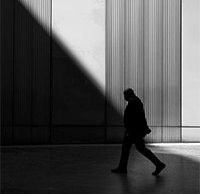Embracing shadows: Sean Tucker on learning that losing shadow detail can be a good thing
posted Wednesday, November 21, 2018 at 7:00 AM EST

When shooting, photographer Sean Tucker exposes for the highlights. This choice he makes to preserve highlights when capturing an image means that often, parts of his image are pushed far to the left on a histogram. There's a give and take in photography. If you protect your highlights, you're also going to need to embrace your shadows. This means that you may need to learn how to utilize shadows in a different way when composing your images. As Tucker demonstrates through his work, the shadows can become important parts of your images and it's not always the case that you need to recover shadow detail to make an image better.
With image sensors offering more dynamic range than ever before and so much of the online discourse centering around dynamic range when a new camera hits store shelves, it can be easy to forget about the compositional power of really dark parts of an image. As cameras become more adept at expanding the tonal range of single images, more shadow detail can be preserved. However, sometimes it's okay for details to be lost to darkness.
When Tucker started doing photography, he recalls going out and shooting a scene outdoors and remembering how it looked to his eyes, with details simultaneously visible in both bright and dark parts of the scene. However, when he brought his camera home and opened the files, so much of a shot was very dark, much darker than it appeared to his eyes. To compensate, he took his raw files and started creating HDR images or utilizing shadows and clarity sliders to try to make an image appear how it looked to the naked eye. Tucker felt like if he could see dark shadows in his images, he had not created a good image and he had thrown away detail. When you try to "bully" a camera into seeing the way you see, your image files will break down. "I was so scared of the shadows. I hadn't yet learned to embrace the shadows," Tucker remarks in the video below, before discussing the artistic value of shadows in images.
(Via Sean Tucker)